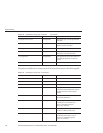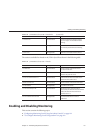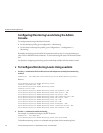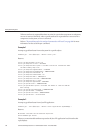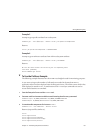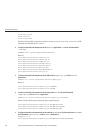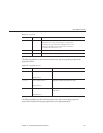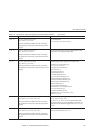
When an attribute is requested that does not exist for a particular component or subsystem,
an error is returned. Similarly, when a specic attribute is requested that is not active for a
component or subsystem, an error is returned.
Refer to
“Expected Output for list and get Commands at All Levels” on page 202 for more
information on the use of the get command.
Example 1
Attempt to get all attributes from a subsystem for a specic object:
asadmin> get --user admin-user --monitor server.jvm.*
Returns:
server.jvm.dotted-name= server.jvm
server.jvm.heapsize-current = 21241856
server.jvm.heapsize-description = Provides statistical information about
the JVM’s memory heap size.
server.jvm.heapsize-highwatermark = 21241856
server.jvm.heapsize-lastsampletime = 1080232913938
server.jvm.heapsize-lowerbound = 0
server.jvm.heapsize-lowwatermark = 0
server.jvm.heapsize-name = JvmHeapSize
server.jvm.heapsize-starttime = 1080234457308
server.jvm.heapsize-unit = bytes
server.jvm.heapsize-upperbound = 518979584
server.jvm.uptime-count = 1080234457308
server.jvm.uptime-description = Provides the amount of time the JVM has
been running.
server.jvm.uptime-lastsampletime = 1080234457308
server.jvm.uptime-name = JvmUpTime
server.jvm.uptime-starttime = 1080232913928
server.jvm.uptime-unit = milliseconds
Example 2
Attempt to get all attributes from a Java EE application:
asadmin> get --user admin-user --monitor server.applications.myJavaEEApp.*
Returns:
No matches resulted from the wildcard expression.
CLI137 Command get failed.
There are no monitorable attributes exposed at the Java-EE-application level, therefore this
reply displays.
ViewingMonitoringData
SunGlassFishEnterpriseServer2.1AdministrationGuide • December2008198



